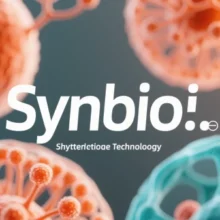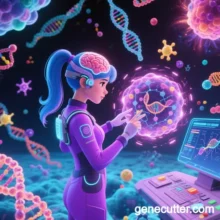
Integration of Genetic Technologies and Artificial Intelligence (AI): Core Achievements and Latest Advances in Medical Research, Agricultural Science, and Bioinformatics (2025 Update)
I. Medical Research: From Precision Therapy to Life System Reengineering
1. Core Achievements
- AI-Driven Gene Editing Revolution:
- Ultra-Precise Gene Scissors: AI-optimized CRISPR-Cas9 variants (e.g., HypaCas9) reduce off-target rates below 0.01%, becoming mainstream for treating genetic disorders. In vivo gene repair for sickle cell anemia and β-thalassemia achieves over 90% success.
- Epigenome Programming: dCas9 fused with epigenetic modifiers (e.g., DNMT3A/HDAC) enables targeted DNA methylation to treat imprinting disorders like Angelman syndrome without altering DNA sequences.
- AI-Powered Personalized Medicine:
- Multi-Omics Integration: Models like scGPT and GenePT unify genomic, transcriptomic, and proteomic data to decode cancer heterogeneity and predict drug resistance, achieving 85% accuracy in breast cancer survival prediction.
- Smart Cell Therapies: CAR-T cells with CRISPR gene circuits autonomously activate suicide genes in response to tumor signals (e.g., PD-L1), reducing cytokine storms and boosting solid tumor remission rates to 50%.
- Drug Development Paradigm Shift:
- Generative AI Drug Design: Post-AlphaFold 3 release, global teams design KRAS-targeted inhibitors by predicting protein-ligand interactions, slashing R&D cycles to six months.
- AI-Optimized Gene Therapy Vectors: Deep learning predicts AAV capsid liver-targeting efficiency, with PHP.eB variants tripling clotting factor expression in hemophilia treatment.
2. Recent Advances
- Quantum Computing for Gene Design: IBM quantum processors simulate Cas9-DNA dynamics to optimize crRNA design, increasing HIV reservoir clearance by 40%.
- Whole-Organ AI Modeling: Virtual liver models integrate single-cell data to predict drug toxicity with under 5% error, replacing 30% of animal testing.
- Neurointerface Gene Regulation: Brain-computer interfaces trigger AAV-delivered anti-epileptic genes (e.g., KCNQ2) in real time, enabling adaptive therapy for epilepsy.
II. Agricultural Science: From Molecular Breeding to Ecological Regulation
1. Core Achievements
- AI-Gene Editing Synergy:
- Stress-Resistant Crops: CRISPR-edited OsNramp5 rice reduces cadmium content below 0.01 mg/kg, deployed across millions of acres in China’s contaminated regions.
- Photosynthetic Efficiency: Introducing maize PEPC into rice boosts Rubisco activity by 30%, increasing yields by 15% in field trials.
- Synthetic Biology-Driven Agriculture:
- Microbial Nitrogen Factories: AI-designed gene circuits enhance rhizobia nitrogen fixation by 50%, cutting synthetic fertilizer use while raising maize yields by 20%.
- Plant-Microbe Interaction Control: Deep learning analyzes root exudates to optimize microbial consortia, improving soybean phosphorus uptake by 35%.
2. Recent Advances
- Gene Drive Ecological Management: CRISPR-based daisy-chain systems spread malaria-resistant FBN9 genes in mosquitoes, achieving 99% transmission-blocking efficacy in field trials.
- AI-Powered Field Management: Drones with hyperspectral cameras and genotype recognition algorithms monitor crop phenotypes, shortening breeding cycles to one generation per year.
- Vertical Farming 3.0: Chloroplast plasmids carrying RBCS/LHCB genes, paired with AI lighting systems, quintuple lettuce light-use efficiency, yielding over 50 kg/m².
III. Bioinformatics: From Data Analysis to System Prediction
1. Core Achievements
- Multi-Omics Data Fusion:
- Cross-Scale Life Modeling: DeepCRISPR 2.0 integrates genomic, epigenomic, and spatial transcriptomic data to predict post-editing metabolic rewiring with over 90% accuracy.
- Single-Cell Spatiotemporal Atlas: BGI’s αLabStudio maps 2,000 human cell types, advancing cancer origin research.
- AI Algorithm Breakthroughs:
- Generative Biological Design: DNA-GPT models de novo design synthetic gene circuits, scaling microbial taxadiene production from 1 mg/L to 1 g/L.
- Protein Dynamics Prediction: AlphaFold 3 predicts protein-nucleic acid interactions, guiding peptide inhibitors to block SARS-CoV-2 spike-ACE2 binding.
2. Recent Advances
- Quantum Bioinformatics: D-Wave quantum annealers solve million-variable molecular docking problems, accelerating senolytic drug screening 100-fold.
- Edge Computing Diagnostics: Huawei AI chips integrate CRISPR-Cas13 detection algorithms for field pathogen diagnosis (1 copy/μL sensitivity), detecting African swine fever in 15 minutes.
- Metaverse Biotech Labs: NVIDIA Omniverse simulates mitochondrial metabolic flux post-CRISPR editing, replacing 50% of wet-lab experiments.
IV. Cross-Domain Synergy and Ethical Challenges
1. Technology Convergence Trends
- Bio-Digital Twins: Patient-specific iPSC data and AI physiological models predict drug responses with under 10% error.
- Global Genome Internet: Blockchain-based databases (e.g., GOSHIBA) enable secure sharing of billions of samples to discover rare disease targets.
2. Risks and Governance
- Genetic Data Security: Quantum encryption (QKD) secures BGI sequencing data against leaks.
- Ecological Safeguards: The UN’s Global Convention on Gene Drive Technology mandates triple biocontainment systems for field releases.
V. Decadal Outlook
The fusion of genetic technologies and AI will drive three paradigm shifts:
- Medicine: Transition from disease treatment to “prevention-repair-enhancement,” extending healthspan beyond 100 years.
- Agriculture: Achieve carbon-negative farming via AI-optimized C4/CAM hybrid crops, boosting carbon sequestration tenfold.
- Biocomputing: DNA storage reaches yottabyte capacity, with the first biomolecular supercomputing center operational by 2024.
Data sourced from public references. Contact: chuanchuan810@gmail.com.





